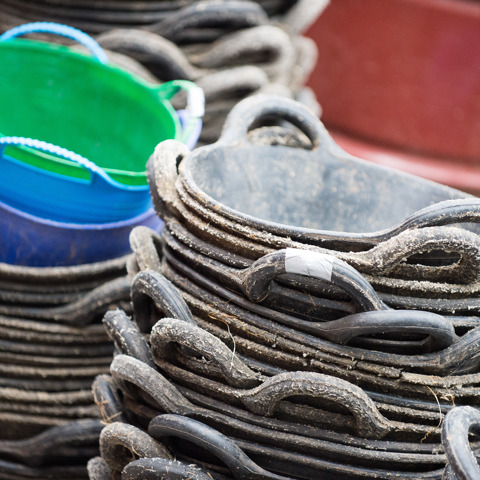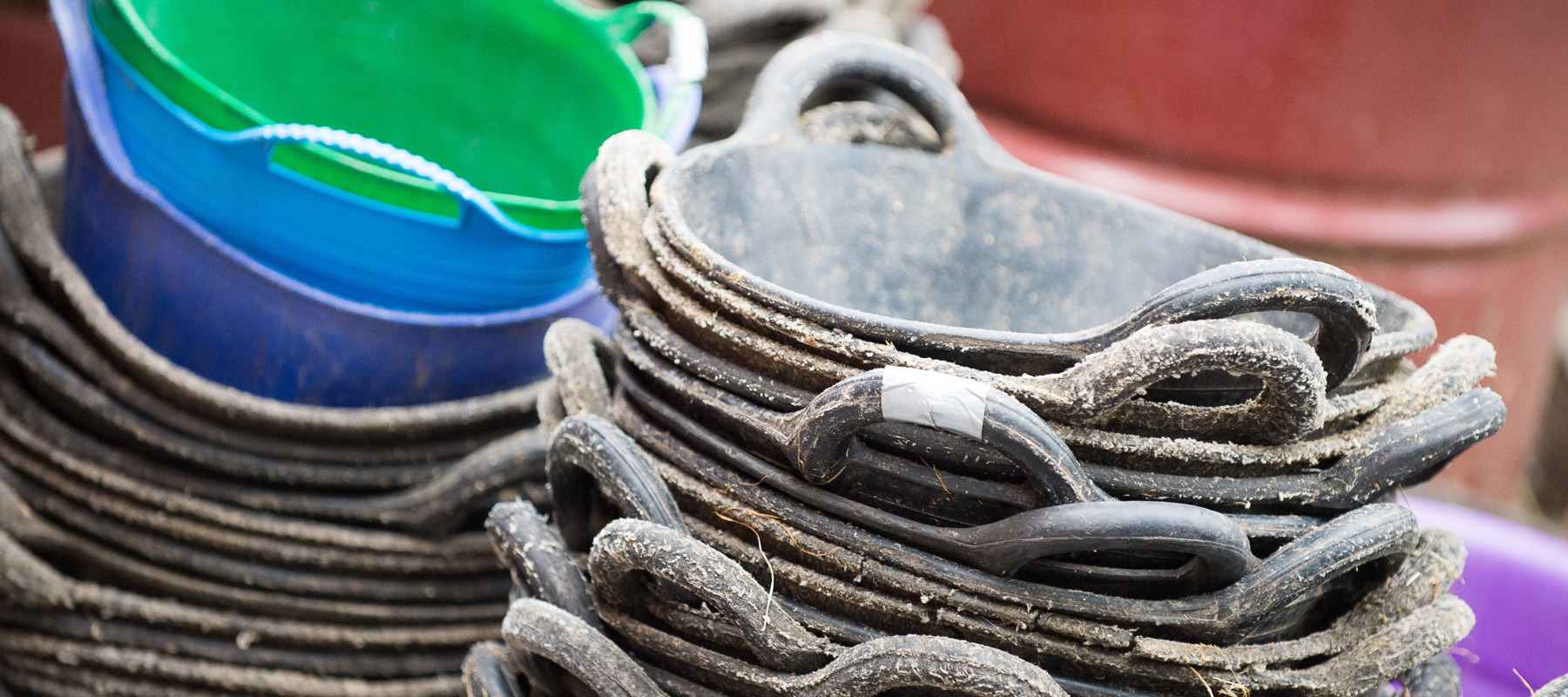The legal part
All horses benefit from a high forage diet, but there are instances where additional bucket feeds are required. As owners and carers, it’s important that we understand what a feed bag is telling us and choose the right feed from its content rather than the marketing.
All feed companies must display certain information by law on their feed bags – this is called the statutory statement and must provide the information labelled below.
The company is not allowed to make claims that certain feeds treat or prevent any conditions such as gastric ulcers or laminitis, for example.
Any information provided outside of the statutory statement is at the discretion of the company, such as the decision to include levels of sugar or starch. An example of what to look out for can be seen below, please note that this is not a real product and is for illustrative purposes only.
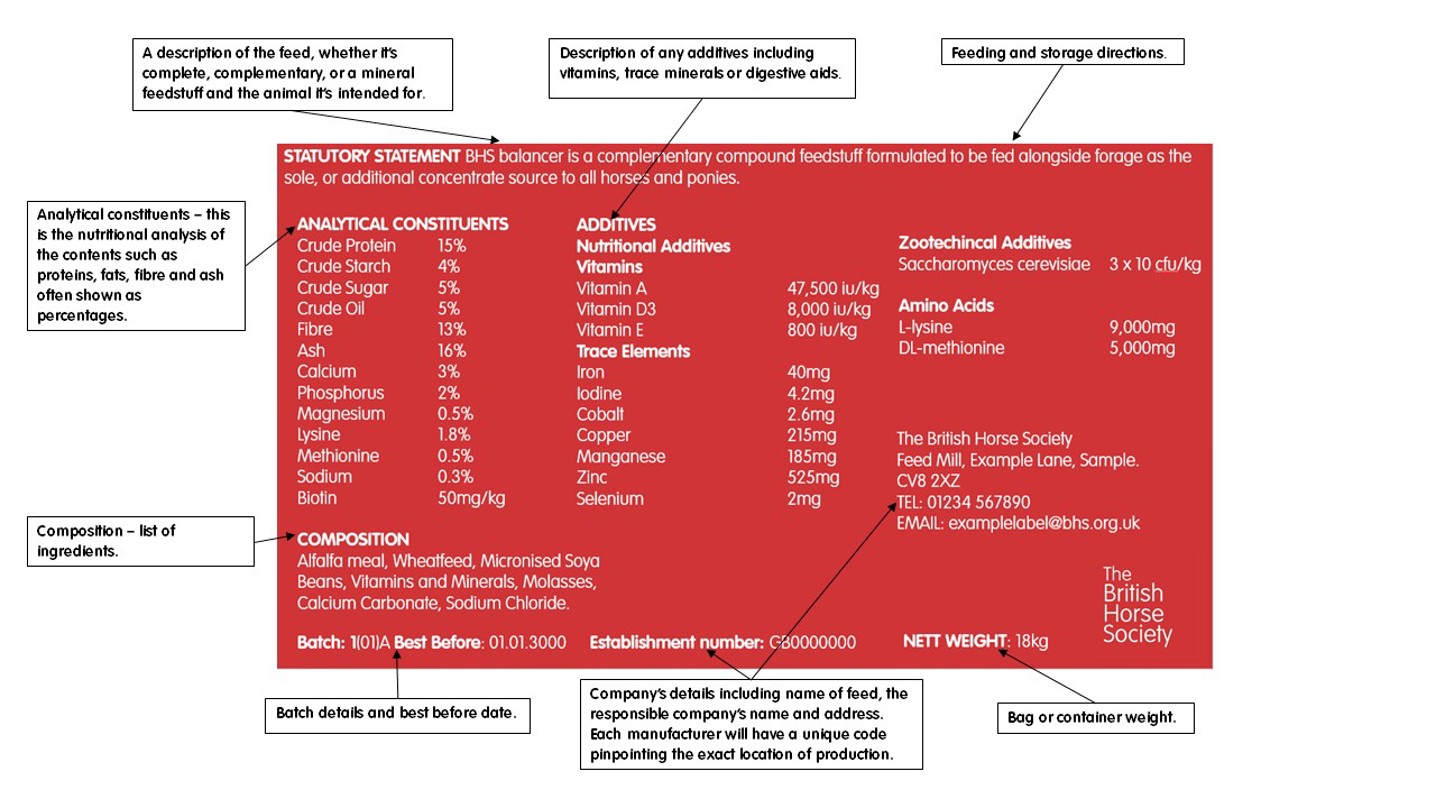
Other symbols to look out for
When searching for a suitable feed or supplement it may be useful to look for the following information:
- The BETA NOPS logo – this indicates that the manufacturer is a member of the British Equestrian Trade Association (BETA) and therefore follows their manufacturing codes to make sure that no naturally occurring prohibited substances (NOPS) enter the feeds1. This is especially important if your horse is competing under an affiliated governing body.
- The BETA EGUS mark – this tells the consumer that the feed is suitable for horses prone to gastric ulcers. All feeds which bear this mark have undergone further testing and examination of ingredients. It also means that BETA have analysed the company’s labelling and marketing claims.
- The Laminitis Trust approval mark – this tells the purchaser that the feed is suitable for horses which are prone to laminitis. The ingredients and contents have been analysed by the trust and if the feed is given in the correct quantities, it should support the laminitic horse2. Feed mills are inspected, recipes are analysed and the packaging is reviewed on an annual basis.
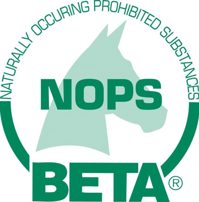
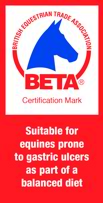
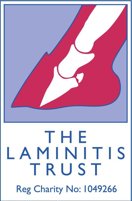
Naturally Occurring Prohibited Substances (NOPS)
A prohibited substance is defined as ‘anything which can exert an effect on a horse’1. A NOPS is anything which can be found within an ingredient or one that has entered a feed through cross-contamination. This is extremely important in competition horses, which may be subject to a blood test to make sure they’re not at an advantage due to ‘doping’.
The scheme makes sure that all member companies follow stringent production guidelines so that they continuously test and assess at every stage of manufacturing.
It’s also the responsibility of everyone involved with the care and feeding of the horse that they’re taking all necessary precautions to prevent cross-contamination. This can be as simple as washing utensils after making each feed or having separate, coloured buckets for horses which may be on medication or on a different feed. Good hygiene should always be applied.
Ingredients list
Generally, the ingredients are listed with the highest inclusion being at the top and the lowest at the end. This information can tell you a lot about the possible effect it may have on your horse such as conditioning, performance or heating (heating can be interpreted as the horse becoming fizzy or full of energy).
For example, if oats or barley are the top of the list, this suggests the feed is high in starch with a high energy content and may have a heating effect on some horses. If the top ingredients are sugar beet pulp or straw pellets, this suggests a high fibre feed which would suit the leisure horse.
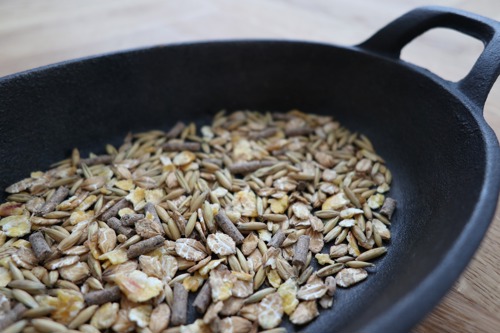
Glossary of terms
Listed below are words and terms often printed onto feed bags. Here’s what they mean:
- Ash – indicates the mineral content of a feed
- Micronized/flaked/extruded – these are different methods of preparing the ingredient to improve its digestibility
- Crude – a method used to measure specific nutrients
- Additives – these aren’t always ‘bad’ ingredients. A legal term which is used to describe certain ingredients which are often important to horse health
- Chelate – commonly seen as ‘chelated minerals’. This means they have been attached to another molecule to make them more readily digestible to the horse
- Saccharomyces Cerevisiae – this is a type of yeast which is added to feeds to promote digestive health
- Fully fortified – this means that the feed is complete as it has a wide range of vitamins and minerals and doesn’t need the addition of a balancer
- Oatfeed – this is the outer fibrous coating on an oat suitable for leisure feeds, whereas the actual oat centre has a higher starch content.
References
Reference list
chevron-down
chevron-up
- British Equestrian Trade Association (BETA). (2023) BETA NOPS Scheme.
- The Laminitis Trust. (2023) Laminitis Trust approval mark for horse feeds.
Get in touch – we’re here to help
The Horse Care and Welfare Team are here to help and can offer you further advice with any questions you may have. Contact us on 02476 840517* or email welfare@bhs.org.uk – You can also get in touch with us via our social media channels.
Opening times are 8:35 am - 5 pm from Monday – Thursday and 8:35 am - 3 pm on Friday.
*Calls may be recorded for monitoring purposes.

